Hint: It depends on your living and cleaning habits. With the recent pandemic and lockdowns, a variety of people became “clean freaks” -...
Post Construction Cleaning Tips
Post Construction Cleaning Tips
What does a newly renovated office and a newly constructed home have in common? Dusty walls and ceiling, dull floors, rooms smelling of fresh paint, powdered table tops and scattered sand in the toilet. Post construction cleaning may not be part of your contract with the contractors so when the construction workers leave, everything seems to be far from how you imagined it or from that presentation given to you by the architect, or even worse, leftover hazardous materials and debris are still either all over the place or moved to one corner of a room. Sure, it’s easy to have it cleaned by your office cleaners or helper, until you realize that it doesn’t take only one day for one person to do that task, and get the best and shining results.
When you search the web, most results will give you a simple 3-step/phase cleaning process (Rough clean, light clean and final cleaning or so) or a list of vague instructions. Today, we’re going to walk you through on some tips on how to do a post-construction cleaning for your home or office that will really give results.
- Set your team
- Suit up for safety
- Move large debris
- Vacuum dusts and small debris
- Ceiling and wall washing
- Detailed wipe down cleaning
- Toilet and bath cleaning
- Floor washing and mopping
- Deodorizing
- Waste disposal
POST CONSTRUCTION TIPS
Set your team
 The number of cleaners needed will depend on the floor area to be cleaned and how soon you want it done. A post-construction cleaning, no matter how small or big it is, cannot be a one-man-show. The more cleaners you have, the faster the task will finish. By a rule of thumb in the cleaning industry, a skilled, professional cleaner can thoroughly clean 15 square meters for 2-4 hours.
The number of cleaners needed will depend on the floor area to be cleaned and how soon you want it done. A post-construction cleaning, no matter how small or big it is, cannot be a one-man-show. The more cleaners you have, the faster the task will finish. By a rule of thumb in the cleaning industry, a skilled, professional cleaner can thoroughly clean 15 square meters for 2-4 hours.
Suit up for safety
Due to the fact that there are still dust and debris after your office or home renovations, it is best to protect your cleaning team. Wearing thick rubber gloves will ensure there will be no cuts on fingers. Face masks or respirators to ensure you won’t inhale dusts and micro-droplets that can cause respiratory diseases. Pants and long sleeved shirts are mandatory of course, to ensure that any accidental cuts or bruises will be prevented.
Move large debris
Large ones are usually the heavier ones, and cannot be simply removed using a vacuum or sweeper. Move large debris like chipped off concrete, left over wood and pipes to a place where you could easily collect them later on for faster disposal. This will also lessen the risk of accidents.
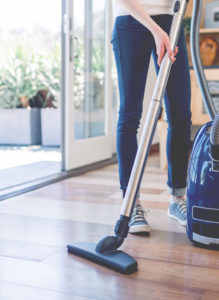 Vacuum dusts and small debris
Vacuum dusts and small debris
Get your trusty vacuum and power it on to the remaining small debris. Start from the ceiling as sometimes cobwebs start to form when the construction or renovation took weeks or months to complete. Move towards the corners and then to your floor. Vacuum the entire floor and work from room to room. This way, you will prevent the dust from moving from one place to another
Ceiling and wall washing
Using a swiffer with a damp cloth attached, wipe down ceiling and walls. Vacuum cleaners can’t reach and remove all the dust stuck on walls and ceiling, so a swiffer will do the trick. Diluted all-purpose cleaner will help in removing some dust stains as well and help in making this part finish faster.
Detailed wipe down cleaning
Using a diluted all-purpose cleaner and a wash cloth, wipe down overhead cabinets, door frames, table tops and other surfaces which your swiffer can’t go through. Don’t forget the doors, door knobs/handles and closets. Any excess dust and dirt will be removed this way.
Floor washing and mopping
Depending on the floor, you might need them washed to get rid of excess cement and dirt (since you have been walking all over them during the whole time already), and this may be true to concrete or tiled floors. Wooden floors or vinyl tiled floors need to be mopped with water. Adding cleaning solutions might ruin your tiles, so it is best to consult with your contracter regarding that matter. For carpet floors, usually no further cleaning is needed after going over it with a vacuum, but in case of unfortunate circumstances or accidents in your carpet, you may need to have to do a carpet shampoo cleaning.
Toilet and bath cleaning
Cleaning the toilet and bath can really be a challenge, but like any room, it can be cleaned to perfection, especially if it is part of the newly constructed or renovated part of your home or office. It might just need a hard rinse to get rid of excess grout or cement left over from the installation of the toilet bowl and tiles. Just make sure that the tile grouts are already dry and all the bathroom fixtures are set so that they last longer.
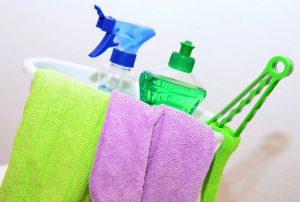 Deodorizing
Deodorizing
Now that you are done with the cleaning, it’s time to deodorize your place. Strong odors might still be there like paint, varnish, or even the cleaning solution that you used. The ideal way is to ventilate your place for at least a day to ensure that the odors are dilluted by natural air, however, if this is impossible, using commercial air-fresheners can temporarily do this fix, or installing an air-purifier from the start of the post-construction cleaning can offer a more permanent solution.
Waste disposal
To ensure that no dirt or debris goes back, dispose off waste to your outdoor garbage can or have a professional garbage collector handle it. Designating a place within your home or office for garbage cans/waste baskets can also ensure to keep your place always clean and safe.
Doing a post-construction cleaning by yourself can be stressful, and sometimes more time consuming. In case you find the need to hire a professional cleaning company for your post-construction cleaning, contact us today and we will definitely make sure your place shines as you have dreamed and planned.

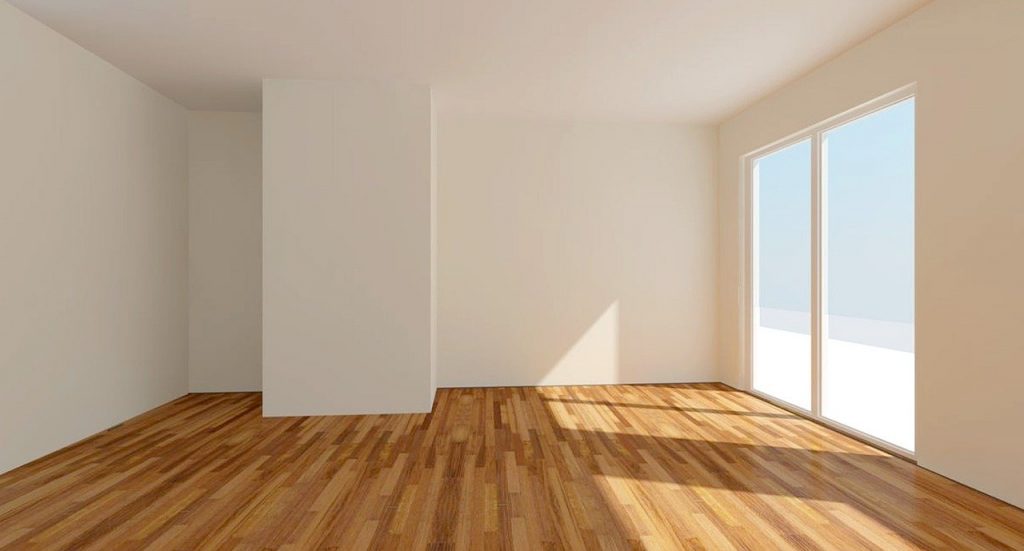
 At the start of the pandemic
At the start of the pandemic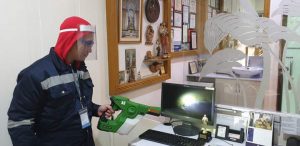 The financial assistance from concerned government agencies haven’t arrived yet as of this posting, but the company knew that compassion is also part of growing a business, especially in a service industry that relies on manpower. Thankfully, the government released some memorandum that enables CMDA Cleaning Services to do a unique and rising type of service – Disinfection. Our Disinfection officers were still able to work but operates on special and strict guidelines:
The financial assistance from concerned government agencies haven’t arrived yet as of this posting, but the company knew that compassion is also part of growing a business, especially in a service industry that relies on manpower. Thankfully, the government released some memorandum that enables CMDA Cleaning Services to do a unique and rising type of service – Disinfection. Our Disinfection officers were still able to work but operates on special and strict guidelines:
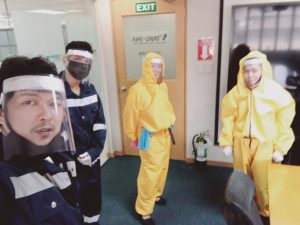
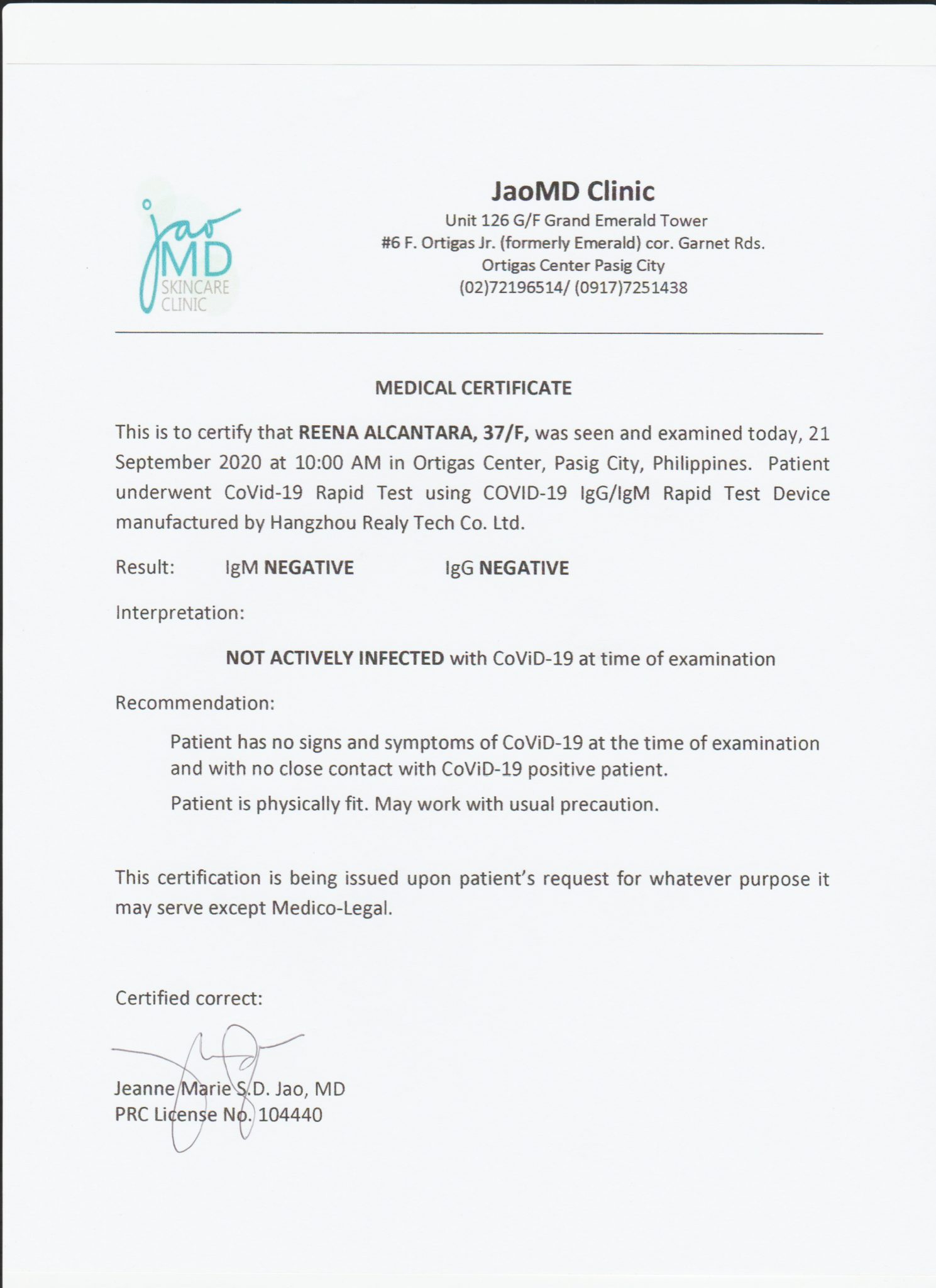
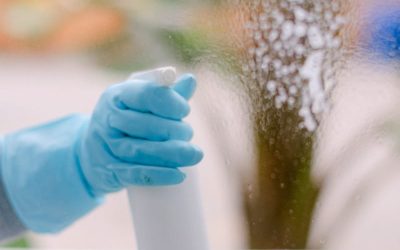
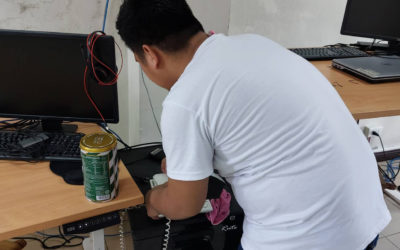

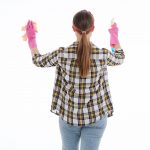 This is a process wherein you use a washcloth/mop damped with disinfectant (dilluted or concentrated) on surfaces. You can do this after a general or deep cleaning of your office, or at the same time during that process. If you have the manpower, this is the most economical, since disinfectants and chlorine based liquids are available almost anywhere.
Type of Office:
This is a process wherein you use a washcloth/mop damped with disinfectant (dilluted or concentrated) on surfaces. You can do this after a general or deep cleaning of your office, or at the same time during that process. If you have the manpower, this is the most economical, since disinfectants and chlorine based liquids are available almost anywhere.
Type of Office:
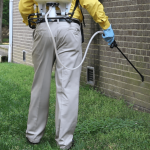 As the name implies, a mechanical or electric spray is used in the this process. The objective of this process is to disperse the liquid disinfectant on surfaces. The action and effectivity of disinfection depends highly on the disinfectant used. With the tool or machine, it can reach more areas as compared to doing a pat down/wipe down disinfection, however, the end result – wet surfaces. Wiping down the disinfectant would mean less effect on killing bacteria and viruses, so you have to wait until it dries up. This is not good on carpets as it might give out a nasty smell after a few days. It may also affect office computers and outlets.
Type of Office:
As the name implies, a mechanical or electric spray is used in the this process. The objective of this process is to disperse the liquid disinfectant on surfaces. The action and effectivity of disinfection depends highly on the disinfectant used. With the tool or machine, it can reach more areas as compared to doing a pat down/wipe down disinfection, however, the end result – wet surfaces. Wiping down the disinfectant would mean less effect on killing bacteria and viruses, so you have to wait until it dries up. This is not good on carpets as it might give out a nasty smell after a few days. It may also affect office computers and outlets.
Type of Office:
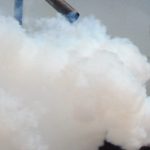 This type of disinfection is unique compared to the rest, as it utilizes fog or fumes instead of liquid or aerosol. The process involve heating oil or water based disinfectants to disperse it as fog or fume, effectively dispersing it on more surface area. When using the correct disinfecting liquid solution that is manufactured for this type of equipment, you can achieve a good disinfection, however, the process may trigger the smoke alarm (due to the fog/fumes). The fumes are also in the area for an hour or more, so it would be impossible to use the area after the process. The fumes can also cause respiratory illnesses that affects humans, animals and plants.
Type of Office:
This type of disinfection is unique compared to the rest, as it utilizes fog or fumes instead of liquid or aerosol. The process involve heating oil or water based disinfectants to disperse it as fog or fume, effectively dispersing it on more surface area. When using the correct disinfecting liquid solution that is manufactured for this type of equipment, you can achieve a good disinfection, however, the process may trigger the smoke alarm (due to the fog/fumes). The fumes are also in the area for an hour or more, so it would be impossible to use the area after the process. The fumes can also cause respiratory illnesses that affects humans, animals and plants.
Type of Office:
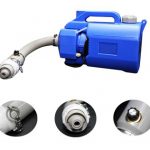 This type of disinfection process utilizes a special machine that delivers the liquid disinfectant into microdroplets upon release. It’s almost similar with the spray disinfection but you get a less wet and less moist outcome. It does this by letting the liquid pass through a controlled airflow or blower (instead of pressurizing it or heating it) which results in microdroplet dispersal. It does not affect the quality of the disinfectant and it can reach a lot of surface area as well.
Type of Office:
This type of disinfection process utilizes a special machine that delivers the liquid disinfectant into microdroplets upon release. It’s almost similar with the spray disinfection but you get a less wet and less moist outcome. It does this by letting the liquid pass through a controlled airflow or blower (instead of pressurizing it or heating it) which results in microdroplet dispersal. It does not affect the quality of the disinfectant and it can reach a lot of surface area as well.
Type of Office:
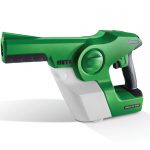 This is a specialized or evolved form of the cold fogger and perhaps the most effective and efficient way of disinfecting your office. The process involves charging/ionizing the microdroplets – magnetizing it with a similar charge so that it repels each other giving a better diffusion (scatters in spaces better), at the same time, it attracts bacteria and viruses. Because the microdroplet are greatly charged, it sticks to walls and surfaces, so what you have is the disinfectant, the bacteria and virus, all glued hard to the wall or surface, and still with enough charge to attract more bacteria and virus to the disinfectant. That is a total disinfection technology that is now available to us all.
Type of Office:
This is a specialized or evolved form of the cold fogger and perhaps the most effective and efficient way of disinfecting your office. The process involves charging/ionizing the microdroplets – magnetizing it with a similar charge so that it repels each other giving a better diffusion (scatters in spaces better), at the same time, it attracts bacteria and viruses. Because the microdroplet are greatly charged, it sticks to walls and surfaces, so what you have is the disinfectant, the bacteria and virus, all glued hard to the wall or surface, and still with enough charge to attract more bacteria and virus to the disinfectant. That is a total disinfection technology that is now available to us all.
Type of Office:
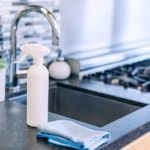 Almost every household have a bottle of Clorox under their kitchen sink, and some uses liquid or powdered chlorine for cleaning homes and pools. In it’s purest form, it is a very good chemical disinfectant, so following the proper water to chlorine ratio should be considered. Most experts and professionals advise that a 1:100 dilution is already okay to kill bacteria and viruses without doing harm to you. That’s 5mL or a spoonful of Cholorox on a 500mL water bottle. You can wipe down almost all surfaces (except surfaces of plates and utensils to avoid ingestion) and you can spray it around your home and garden. The only downside using this is the odor that it leaves. Some prefer the odor but most find it offensive, and not to mention that Chlorine is a mild to medium irritant depending on the concentration.
Almost every household have a bottle of Clorox under their kitchen sink, and some uses liquid or powdered chlorine for cleaning homes and pools. In it’s purest form, it is a very good chemical disinfectant, so following the proper water to chlorine ratio should be considered. Most experts and professionals advise that a 1:100 dilution is already okay to kill bacteria and viruses without doing harm to you. That’s 5mL or a spoonful of Cholorox on a 500mL water bottle. You can wipe down almost all surfaces (except surfaces of plates and utensils to avoid ingestion) and you can spray it around your home and garden. The only downside using this is the odor that it leaves. Some prefer the odor but most find it offensive, and not to mention that Chlorine is a mild to medium irritant depending on the concentration. This is also a very common household item that can be easily used to disinfect surfaces. Be it 30% or 70%, Isopropyl or Ethyl, as long as it is not the ones you use as beverage, then you can definitely use it. Smell-wise, this is much more appealing compared to chlorine, and definitely less irritating on the skin. But for those who are cleaning mavericks out there, never combine alcohol and chlorine as it will create a poisonous gas that is nearly lethal to humans and animals. The downside of using alcohol is its cost and volatility (dries up fast and may catch fire). You can use too much of it if you are running on a budget, and you can’t simply spray it around the house as it dries up fast. Not to mention how it affects certain surfaces like varnished wood and laminated floors and walls.
This is also a very common household item that can be easily used to disinfect surfaces. Be it 30% or 70%, Isopropyl or Ethyl, as long as it is not the ones you use as beverage, then you can definitely use it. Smell-wise, this is much more appealing compared to chlorine, and definitely less irritating on the skin. But for those who are cleaning mavericks out there, never combine alcohol and chlorine as it will create a poisonous gas that is nearly lethal to humans and animals. The downside of using alcohol is its cost and volatility (dries up fast and may catch fire). You can use too much of it if you are running on a budget, and you can’t simply spray it around the house as it dries up fast. Not to mention how it affects certain surfaces like varnished wood and laminated floors and walls.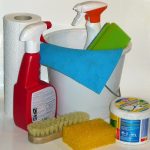 An occassional household that some of us use, liquid disinfectants (commercial names like Lysol or PineSol) are also good in cleaning your homes and offices. Most liquid disinfectants use Benzalkonium Chloride as an active ingredient, one of the things that most hospitals look for when looking for a good disinfectant. Similar to Chlorine, there are recommended dilution for each type of liquid disinfectant to economically clean your place. After mixing the concentrated form with water, you could use it to wipe or mop surfaces. Some brands also come in spray bottles but this may come out more expensive than your regular concentrated version when it comes to using it. Commercial liquid disinfectants are as effective as chlorine and much better smelling, however, it may cost you more.
An occassional household that some of us use, liquid disinfectants (commercial names like Lysol or PineSol) are also good in cleaning your homes and offices. Most liquid disinfectants use Benzalkonium Chloride as an active ingredient, one of the things that most hospitals look for when looking for a good disinfectant. Similar to Chlorine, there are recommended dilution for each type of liquid disinfectant to economically clean your place. After mixing the concentrated form with water, you could use it to wipe or mop surfaces. Some brands also come in spray bottles but this may come out more expensive than your regular concentrated version when it comes to using it. Commercial liquid disinfectants are as effective as chlorine and much better smelling, however, it may cost you more.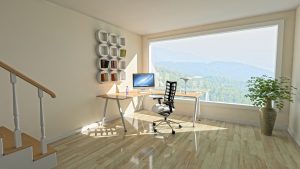
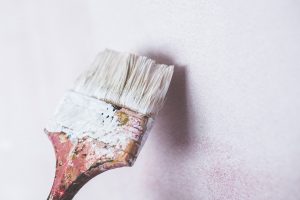

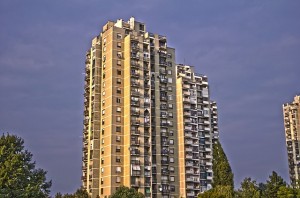 Before you have the new furniture moved in, wear your rubber gloves and face mask and get ready to get dirty as we make the cleaning step by step:
Before you have the new furniture moved in, wear your rubber gloves and face mask and get ready to get dirty as we make the cleaning step by step: